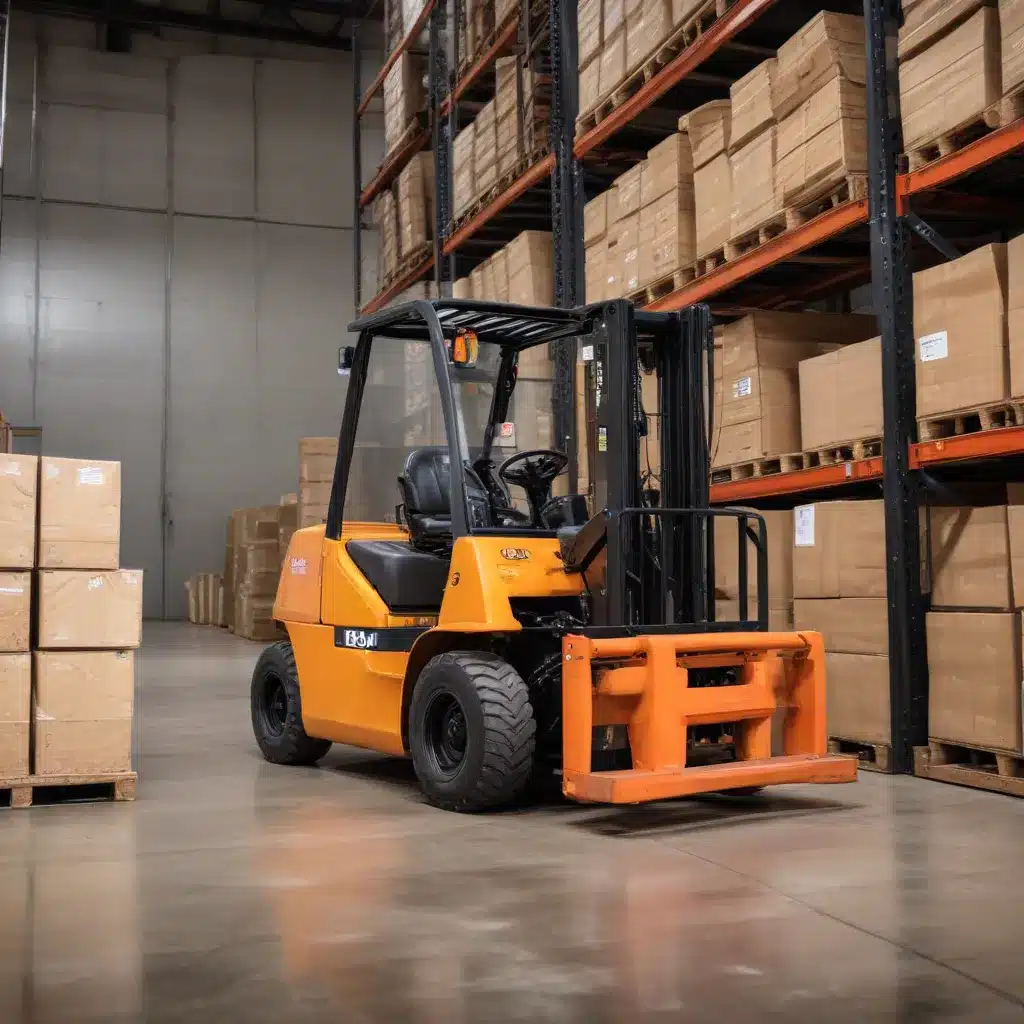
Understanding the Role of Forklifts in Emergency and Disaster Response
Forklifts are essential tools in any well-equipped warehouse or logistics facility, playing a vital role not just in day-to-day operations, but also in emergency and disaster response planning. When disaster strikes, your facility’s ability to rapidly mobilize material handling equipment can make all the difference in your emergency preparedness and resilience.
As an industry expert, you understand that the decision to lease or buy forklifts can have a significant impact on your facility’s emergency planning and response capabilities. In this comprehensive guide, we’ll explore the forklift leasing vs. buying equation, delving into the practical considerations, financial implications, and strategic advantages of each approach when it comes to emergency and disaster preparedness.
Forklift Leasing: Agility and Flexibility in Disaster Response
One of the key benefits of forklift leasing is the inherent flexibility it provides. When a disaster strikes, your facility may suddenly need to scale up or down its material handling capabilities to address the evolving situation. Leased forklifts can be a valuable asset in this regard, as they allow you to quickly adjust your fleet size and specifications to meet the demands of the emergency.
The Texas Disaster Act of 1975 outlines the state’s comprehensive approach to emergency management, empowering the governor to take a range of actions to mitigate the impact of disasters. The Act emphasizes the importance of coordinating state and local resources, as well as leveraging private sector capabilities, to ensure an effective and efficient response. Forklift leasing aligns perfectly with this framework, enabling your facility to seamlessly integrate leased equipment into your disaster response efforts.
Furthermore, the U.S. Government’s National Preparedness System highlights the need for flexible and scalable resource management, which leased forklifts can provide. By maintaining a core fleet of owned equipment while supplementing with leased units as needed, you can optimize your material handling capabilities to address the unique challenges posed by different emergency scenarios.
Forklift Ownership: Reliability and Continuity in Disaster Response
While forklift leasing offers agility, forklift ownership can provide a sense of reliability and continuity in your disaster response planning. Owning your material handling equipment means you have direct control over its maintenance, modification, and deployment, allowing you to ensure that your forklifts are always ready to respond to emergencies.
The Air Force Instruction 91-202 emphasizes the importance of maintaining a well-prepared and resilient force, which extends to the material handling equipment used in emergency situations. Owning your forklifts allows you to prioritize preventive maintenance, enhance safety features, and customize your fleet to meet the specific requirements of your facility’s disaster response plan.
Additionally, the CMS Emergency Preparedness Rule underscores the need for healthcare facilities to have reliable and readily available resources to ensure continuity of care during emergencies. By owning your forklifts, you can ensure that your material handling capabilities are always at the ready, enabling your facility to respond swiftly and effectively to disasters.
Striking the Right Balance: Integrating Leased and Owned Forklifts in Your Disaster Response Plan
The most effective emergency and disaster response plans often leverage a combination of leased and owned forklifts, capitalizing on the strengths of both approaches. By strategically integrating these resources, you can create a comprehensive and adaptable material handling strategy that can weather any storm.
For example, you might maintain a core fleet of owned forklifts that are thoroughly maintained and equipped with the latest safety features, ensuring a reliable and well-prepared response capability. These owned units can serve as the backbone of your disaster response, providing a consistent and dependable foundation.
Complementing your owned fleet, you can leverage leased forklifts to handle sudden spikes in demand or specialized requirements during an emergency. Leased equipment can be rapidly deployed to supplement your owned assets, allowing you to scale your material handling capacity as needed to address the evolving situation.
This balanced approach not only enhances your overall emergency preparedness but also helps you manage the financial implications of maintaining a large, dedicated fleet of forklifts. By strategically combining leased and owned equipment, you can optimize your capital expenditures, maintain flexibility, and ensure your facility is ready to respond effectively to any disaster.
Conclusion: Forklift Leasing and Buying – A Strategic Approach to Disaster Resilience
In the high-stakes world of emergency and disaster response, the choice between forklift leasing and buying can have a profound impact on your facility’s ability to weather the storm. By carefully evaluating the pros and cons of each approach, and tailoring your material handling strategy to your unique operational and financial needs, you can create a disaster-resilient ecosystem that keeps your business running, even in the face of the most challenging circumstances.
As an industry expert, you understand that emergency preparedness is not just a box to be checked, but a continuously evolving process that requires thoughtful planning, adaptability, and a keen eye for the strategic advantages of your material handling equipment. By embracing the insights and guidelines outlined in this comprehensive guide, you can empower your facility to navigate any disaster with confidence, ensuring that your forklifts are always ready to support your emergency response efforts.
Remember, when it comes to forklift leasing vs. buying, the choice is not a simple one-size-fits-all solution. It’s a strategic decision that must be tailored to your facility’s unique needs, financial considerations, and long-term goals. By striking the right balance and integrating both approaches, you can build a material handling infrastructure that is as resilient as it is versatile, positioning your business to emerge stronger and more prepared than ever before.

